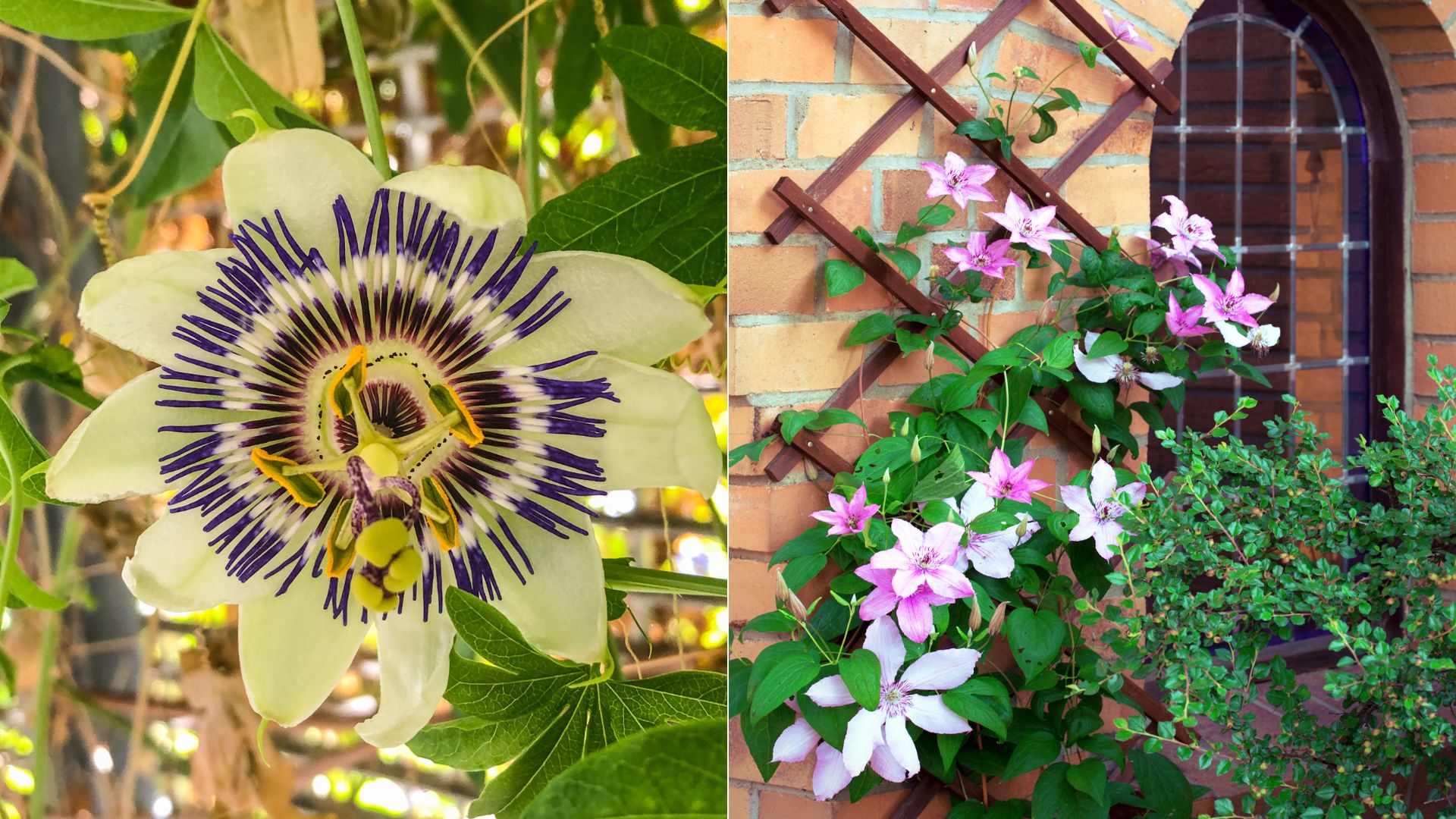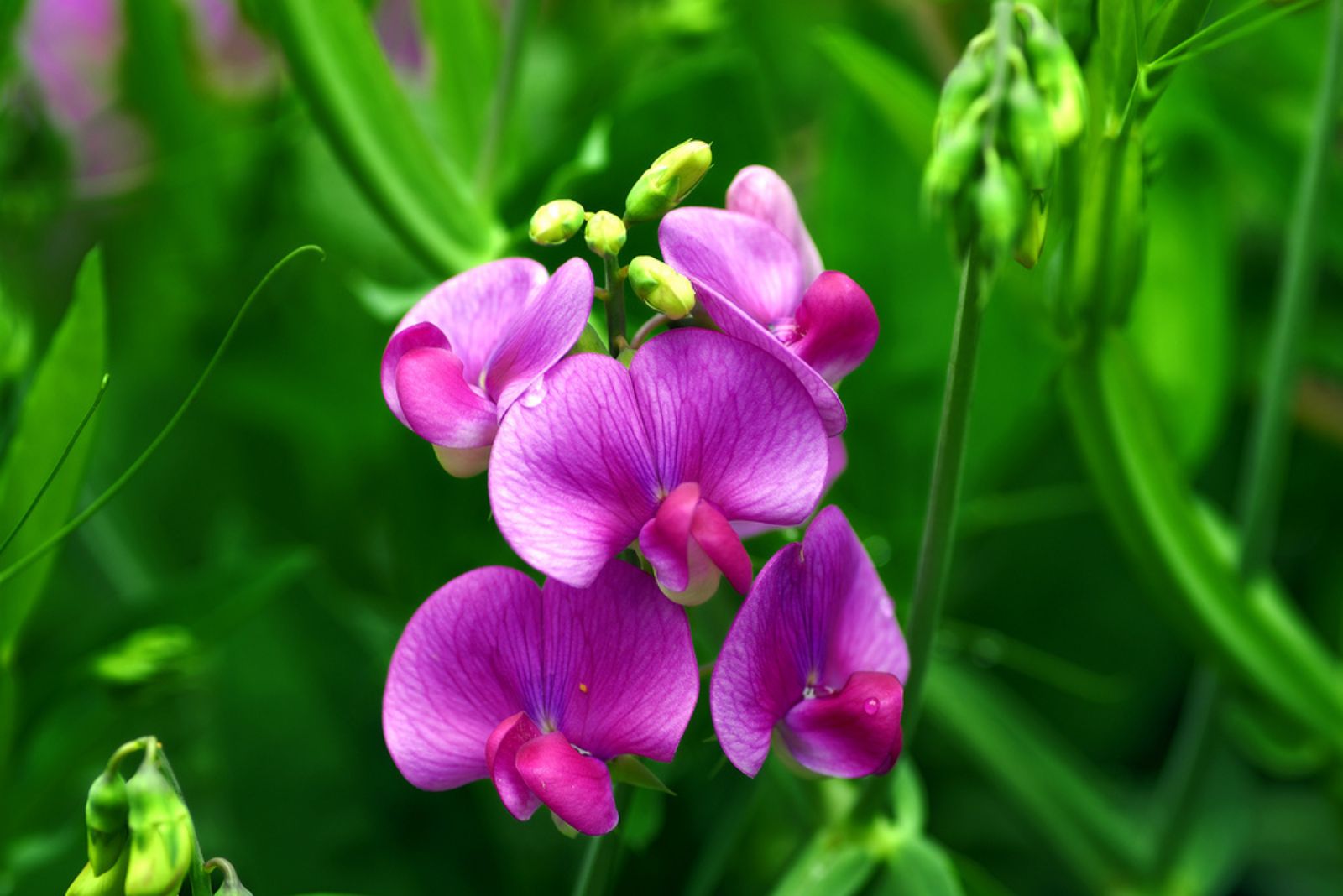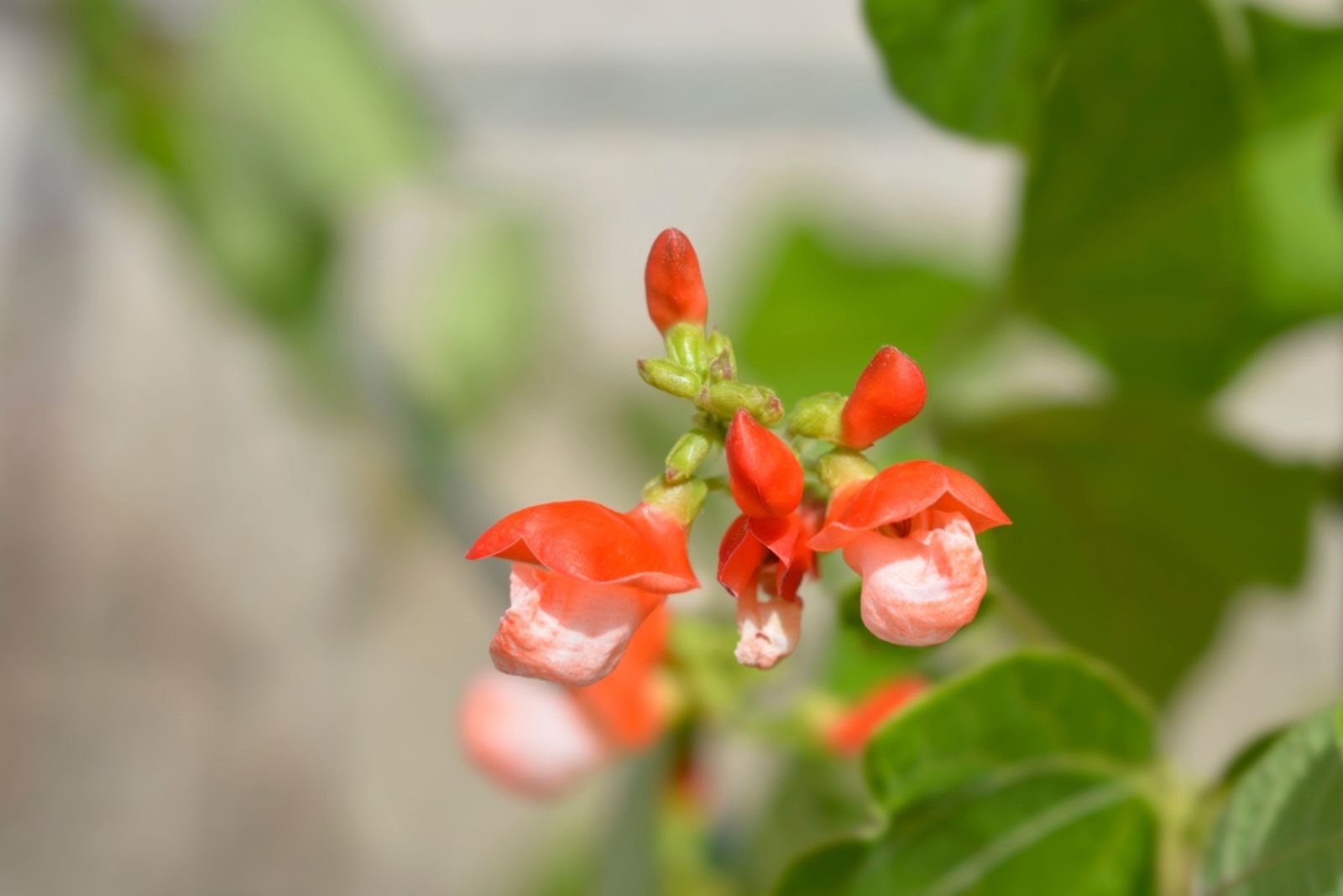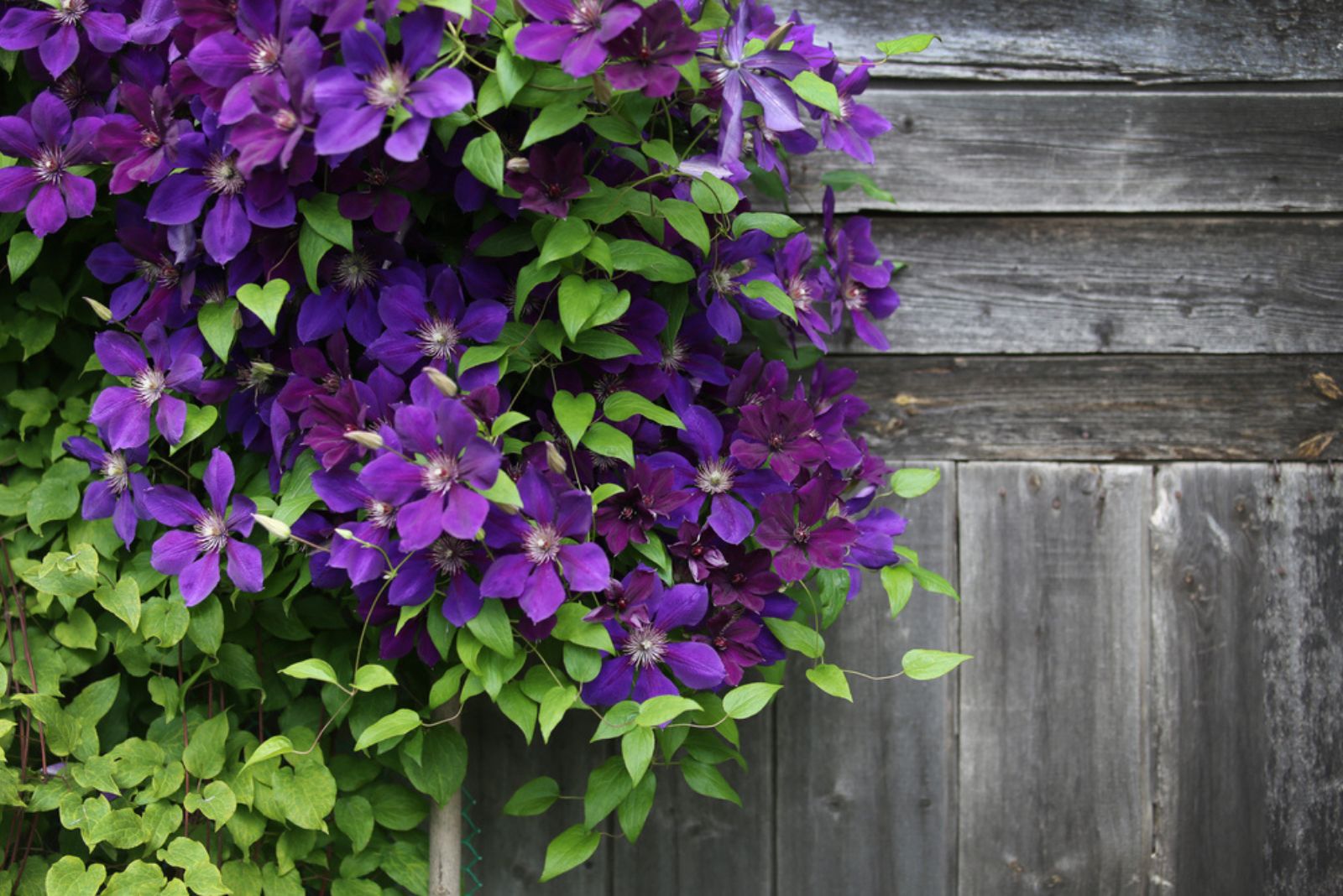Vertical structures make a fantastic addition to outdoor spaces. But you can spice things up even more by adding plants that will climb up these structures.
With a selection of the right plants, you will get a spectacular color display and a combination of incredible scents. But you’re not limited to ornamentals only; edible plants and those with medicinal properties can also adorn your vertical structures.
I’ll show you 5 climbing plants to grow on trellises, arbors, archways, and other similar constructions! And guess what? Each has something different to offer.
1. Passionflower
I’ll start with an exotic plant that will definitely change your garden! Passionflower has it all; it looks breathtaking, has some medicinal benefits, and produces delicious fruits.
This is a native, fast-growing plant with low care requirements, so if you’re a novice gardener, this is the perfect choice for you!
You should grow these fruit vines in a sunny spot and that’s pretty much their only rigid requirement. It’s highly adaptable to various soil types and may even grow on a bit of neglect.
The amazing thing about the Passionflower is that it can reach about 20 feet tall, which means it needs a sturdy structure.
If you would like to get more of these plants, you simply need to divide them or take cuttings. However, passionflower develops quickly under the soil line so if you want to slow things down a little bit, pull out the shoots when you notice them.
The seeds and the pulp are edible and you can even dry the blossoms and make a tea. We lack evidence on the efficiency of passionflower tea on anxiety and insomnia but smaller doses can help you fall asleep easier. (1)
2. Sweet Pea
The appearance of old-fashioned flowers makes us want to add them to our gardens no matter which design we choose. Sweet Pea is among my faves due to its spectacular looks and ease of maintenance.
Even though it’s mainly grown as an annual, you can grow it as a perennial if you live in USDA hardiness zone 7. It’s a prolific self-seeder and you’ll need to cut off the seed pods if you don’t want your Sweet Pea to spread more.
If you want to save some seeds for the next season, you need to leave the seed pods to dry out on the plant and collect them as soon as the fall approaches. The pods will start popping themselves and you’ll notice the seeds are spreading everywhere.
Before planting saved seeds, they need to go through the process of stratification (2) to enhance sprouting, which is done by exposing the seeds to cooler temperatures.
You should start the seeds indoors approximately two months before the last frost. Before sowing, leave Sweet Pea seeds to soak overnight to allow the shell to break easily.
Sow the seeds half an inch deep in free-draining potting soil and make sure the soil is consistently moist. Put the seedling tray in a sunny location and plant the seedlings directly in the ground when the soil thaws.
Don’t worry about light frost; these plants can withstand some cold. When the Sweet Pea seedlings reach approximately 6 inches long, you can remove the central growth to encourage bushing.
3. Jasmine
Here comes a garden classic! The beautiful scent of jasmine and its stunning appearance will fit in perfectly with vertical structures.
Additionally, this plant is renowned for its medicinal benefits; it’s a perfect plant for bedrooms and will help you with sleep.
This flowering plant is hardy in USDA zone 7 and may reach about 15 feet under optimal conditions, which means that the structure you attach it to must be sturdy enough.
Jasmine isn’t finicky over the growing conditions but it performs best in free-draining soil types. You can either grow it in full sun or choose partial shade, which is more suitable for warmer climates.
As your jasmine develops further, train it to climb on the vertical structure and tie up the vines if necessary.
4. Scarlet Runner Beans
If you want a stunning ornamental plant that also produces delicious beans, this plant will do an amazing job.
During the flowering season, you’ll get rewarded with splendid scarlet red blossoms hanging on long vines. As an added bonus, these plants are true magnets for hummingbirds and will help you get a pollen paradise.
This plant can reach 20 feet, so make sure to attach it to a sturdy trellis, archway, or arbor.
Once the threat of frost ends, you can sow runner bean seeds directly in the ground. Press them approximately an inch into the soil and leave at least 3 inches of space between each seed.
Runner beans prefer well-draining and nutrient-rich soil types, thrive in full sun, and will benefit from the application of 10 20 20 fertilizer.
5. Clematis
These plants have adorned gardens worldwide since, well, forever! They’re frequently the first choice for beginner gardeners and make excellent plants for fences.
Clematis enjoys full sun, except if you live in warm climates, where the plant will benefit from some shade. The Leather flower is hardy in USDA zones 4 through 9.
Similarly to other plants on this list, clematis needs a robust trellis, archway, or harbor, because it can reach 20 feet if its basic needs are met.
The major disadvantage of the clematis plant is its invasive nature (3) but you can control the growth by pruning and monitoring.
Archways, harbors, and trellises can completely transform your garden and you’ll get an even better effect if you add some of the climbing plants from this list. Follow our guidelines for maintenance and get a scented garden, a splendid display of colors, blossoms for tea, or delicious veggies or fruits!
References
1. Passionflower. (n.d.). NCCIH. https://www.nccih.nih.gov/health/passionflower
2. Seed stratification: What seeds require cold treatment. (2022, January 27). Illinois Extension. https://extension.illinois.edu/blogs/good-growing/2022-01-27-seed-stratification-what-seeds-require-cold-treatment
3. Clematis terniflora (Japanese Clematis, Japanese virgin’s-bower, Sweet Autumn Clematis, Sweet Autumn Virginsbower) | North Carolina Extension Gardener Plant Toolbox. (n.d.). https://plants.ces.ncsu.edu/plants/clematis-terniflora/






